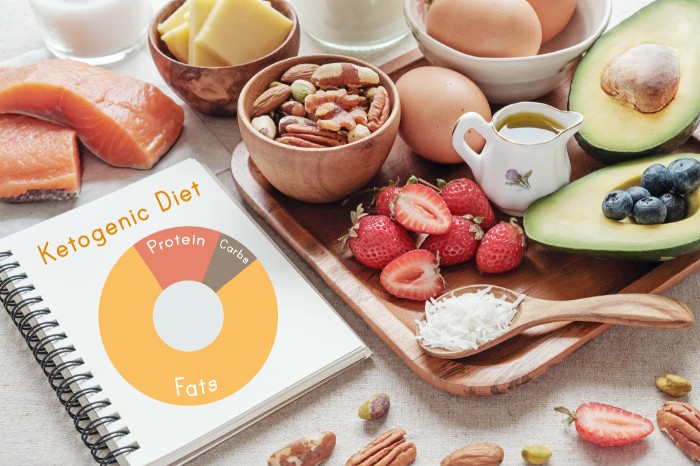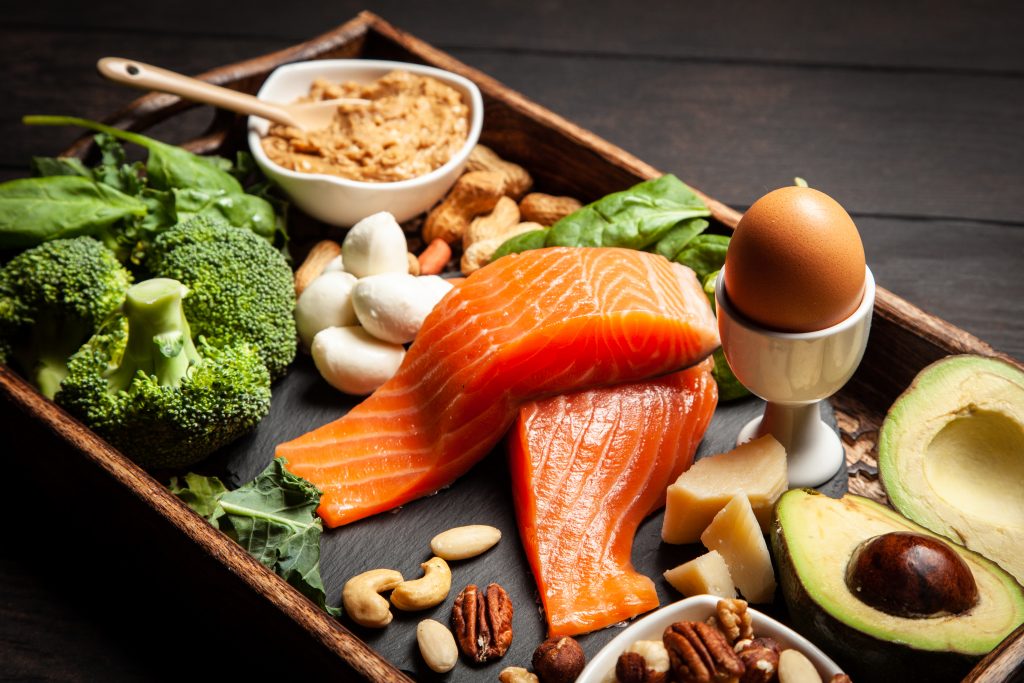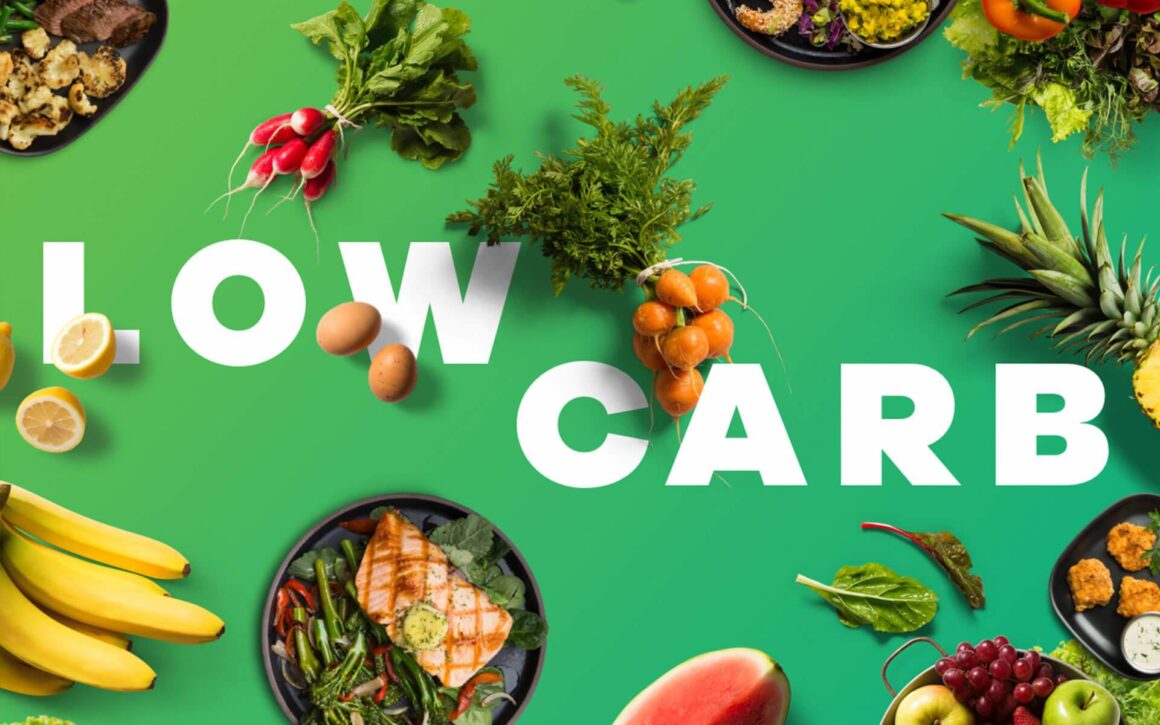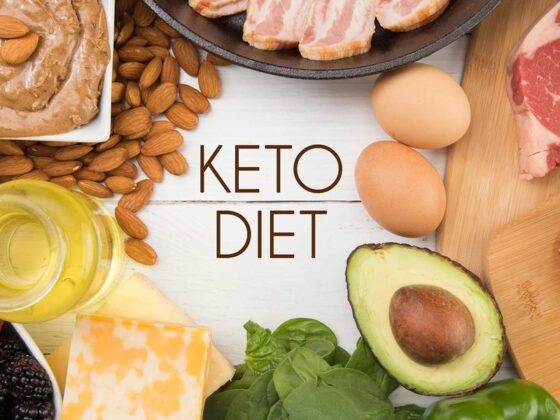Everyone has a different keto diet carb limit and with increasing awareness of health benefits, consuming low carbohydrate, high-fat diet, there is an increasing demand for a keto diet. The keto diet is remarkably good for losing excess body fat without hunger and for improving overall health. It has many benefits for weight loss and controlling type 2 diabetes. That is why so many doctors recommend the keto diet. We will be more concerned about the facts of the Keto diet carb limit and keto diet vs low carb.

What is a keto diet?
The keto diet is a very low-carb, higher-fat diet and moderate protein diet. Keto diet shares many similarities with Atkins and low carb diet. Keto diet reduces carbohydrate intake and replaces it with fat. By reduction of carbs from your body, the body turns into a metabolic state called ketosis.
In this state, “ketosis,” your body becomes incredibly efficient at burning fat for energy instead of carbohydrate. Fatty acid turns into ketones in the liver and supply energy for the brain. Brain, a hungry organ, consumes lots of energy, especially from glucose, and it can’t run on fat directly. It can run on glucose or ketones.
What do keto and ketones mean?
A keto or ketogenic diet is named keto diet as it cause your body to produce small fuel molecules called ketones.
Ketones are the chemical (acidic substance) that your liver produces. The liver produces ketones when you don’t have enough insulin in your body to turn glucose into energy. Instead of carbohydrate, your liver turns fat into ketones and sends them into your bloodstream.

When you follow a ketogenic diet, your entire body switches its energy supply mostly on fat and burns body fat. As insulin level drops very low, body fat starts to burn excessively.
A ketogenic diet is the best choice if you want to lose weight and gain other benefits. It prevents you from excessive hunger and a steady supply of energy. Keto diet prevents you from consuming sugar and high carbs, a significant source of calories and glucose on your body, and prevents your body from obesity.
Types of a ketogenic diet
Standard Ketogenic Diet (SKD):
It involves a very low carb, moderate protein, and a high-fat diet. 75% of fat, 20% of protein, and 5% of crabs are contained on this diet.
Cyclical Ketogenic Diet (CKD):
It involves eating clean carbohydrates one or two days out of the week. Five or six days should follow a standard ketogenic diet consisting of low carb, moderate protein, and a high-fat diet.
Targeted Ketogenic Diet (TKD):
It is similar to a standard ketogenic diet, with one crucial difference, consuming a daily allotment of carbs before, during, or after the workout. Following TKD, you will be in ketosis most of the time.
High Protein Ketogenic Diet:
It is similar to a Standard Ketogenic Diet but includes more fat, moderate protein, and very low carb. It typically contains 60% of fat, 35% of protein, and 5% of carbs.
Know keto diet carb limit
Staying and getting into ketosis is achieved by eating high fat, moderate protein, and low-carb diet. Every individual has a perfect amount of daily carbs. Some people stay on 100 grams of total carbs per day, and some people can stay there on 50 grams of total carbs per day, while others need to keep at around 20 grams of total carbs per day.
How can you keep your keto diet carb limit?
When you start your keto diet, it is recommended to stick with 20 grams of total carbs per day. Twenty grams of total carb is the starting point for most people trying to achieve weight loss or other health benefits.

To get that your body completely acclimates to the keto lifestyle, it is recommended that you stick to 20 grams of net carbs per day for full three months before you set your carb edge. Twenty grams of net carb is the starting point for most people trying to achieve weight loss or general health benefits.
Total Carbs vs. Net carbs
Total carbs include all the different carb diets in diet, such as starches, dietary fiber, and sugars.
On the other hand, net carbs only include carbs that the body can fully digest into glucose; it is also the sum of fully digestible carbs contained within a product or meal.
You can calculate net carbs by subtracting the whole amount of fibers and the half amount of sugar alcohols from the amount of total carbs on a product’s nutrition label. Diabetes patient must consult their doctor before setting the carb limit.
Many health personals do not recognize the concept of net carbs, due to which it remains unclear if there are any confirmed benefits of calculating them. However, increasing dietary fiber intake and decreasing total added sugar intake is beneficial for many people.
By following these methods, you can keep your daily carb limit on a keto diet:
1) By consuming fewer carbs daily and setting up the restriction goal
2) Adding more protein and fatty food diet to a meal regularly daily
3) Not being afraid of fatty food and high rich protein contained food.
4) And not quitting the keto diet plan
Role of keto diet carb limit:
The main objective of the keto diet is to keep your body in a state of ketosis. The state where the body relies on fat for energy rather than carbs and ketone levels is at least 0.5 mmol/L when you test them.
You can only achieve ketosis when your body trains itself to produce ketones from consumed and stored fats. Once you reach ketosis, the only goal is to stay there and maximize its benefits.
Some of the roles of a carb limit on the keto diet are given below:
1) Weight loss
2) Lower blood sugar
3) Prevents from type 2 diabetes
4) Sharpen brains
Keto diet vs. low carb
The ketogenic or keto diet is a very low carb, high-fat diet that has gained popularity.
The keto diet has many characteristics, such as it treats refractory epilepsy, prevents blood sugar, and helps to lose weight.
Benefits
– Keto diet helps to manage epilepsy
– Improve insulin sensitive
-Reduce appetite
-Prevent from cholesterol and triglyceride level
A low carb diet is a way of eating that restricts dietary carbohydrates, mainly from grains, sugar, sweetened beverages, and bread. Only 10% – 30% of calories of carbs are consumed on a day. It is suitable for weight loss and controlling obesity.
A low carb diet means consuming fewer carbohydrates and a higher proportion of fat with an adequate amount of protein. It is also called a low carb, high- fat diet (LCHF). Studies show that a low-carb diet can make it easier to lose weight or control obesity, control blood sugar, reverse type 2 diabetes.
Benefits
– Weight loss
-Sustained long term
-Less extreme adaptation phase than high carb food
– Easier to follow
Drawbacks
-Weakness
-Limit food option
-Limit fruit intake
-May impact micronutrient intake
Similarities between keto diet vs. low carb
Keto diet and low carb diet both are low on carbohydrates.
Technically, both diets do not restrict food groups; instead, both diets push you over the carb limit for the day. Food such as processed foods, sugary foods, and other foods rich in carbohydrates are restricted to diet plans.
The common goal of both diet share is weight loss. Both the keto diet and low carb diet focused on weight loss by minimizing its side effects.
Difference between the keto diet and low carb diet
There are several factors that you should consider while choosing your diet plan.
On a low carb diet, the carbs intake restricts to 50-150 grams of carbs per day, while a keto diet limits carb intake to less than 50 grams per day.
Low carb does not restrict protein intake as you can have a high or medium level of protein per day. On the other hand, the keto diet limiting protein intake to 20% of total calories per day.
Consumption of fat is higher on a keto diet compares to a low carb diet.
Crab on a keto diet
The way to stay on a keto diet is keeping low carbs on your diet. To meet the state of ketosis and other unique benefits, you should restrict carbs on your diet.
Crabmeat is meat found within a crab. Crabmeat is low fat and contains 340 KJ (82 kcal) per 85-gram (3oz) serving.
Crab is an excellent source of protein. It contains almost as much protein per 100 grams as meat. The protein in crab is of high quality and, because of a lack of connective tissue, very digestible for people of all ages.
Crab is also low in fat and contains Omega-3 polyunsaturated acids. Omega-3 also inhibits aggressive behavior. It also helps to protect from heart disease and aids brain development.
Besides, this crab contains selenium, vitamin B2, copper, and phosphorus.
Technically almost every natural food contains small traces of carbs. Only those carbs which are easily digestible are allowed in a keto diet.
The crab should be more regularly on the keto diet because it contains fewer carbs than other protein-rich meat. Since it provides additional benefits, crab is one of the best protein sources on the keto diet.
Keto diet crab recipes
Keto crab cake
The crab cake is the best option for the keto diet. As crab is high on protein and low fat, you can have crab cake any time you want.
Ingredients
-8-ounce lump crab meat
-1/4 onion diced
-1/4 cup diced red pepper
-1 egg
-2 tablespoons mayonnaise
-1 tablespoon old bay seasoning
-1/4 tablespoon pepper
-2 tablespoons unsalted butter for frying
-Greens for serving
Tartar sauce
-1/4 cup mayonnaise
-1 tablespoon lemon juice
-1/2 tablespoon chopped dill pickle
-1/2 tablespoon minced onion
-1 teaspoon swerve
-1/2 teaspoon yellow mustard
-1/2 teaspoon paprika
Instructions
In a medium bowl, mix the crab cake ingredients, form into six patties.
Place all of the sauce ingredients in a small jar with a lid, shake to combine.
In a cast-iron skillet, heat the butter over medium heat. Fry each crab cake for 2-3 minutes per side until golden brown.
Serve with tartar sauce, greens, and a wedge of lemon.
Keto crab salads
The light and crunchy crab alternative salad are great for sandwiches and salads.
Ingredients
-1(8 ounce) package mock crab meat, chopped
-1/2 cup diced celery
-1/4 cup minced scallions
– 3 tablespoons mayonnaise
-1 tablespoon lemon juice
-2 dashes adobo seasoning, or to taste
-salt and ground black pepper to taste
Instructions
Put and combine all the ingredients in a bowl—cover, and chill for 30 minutes before serving.



1 comment